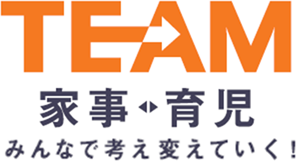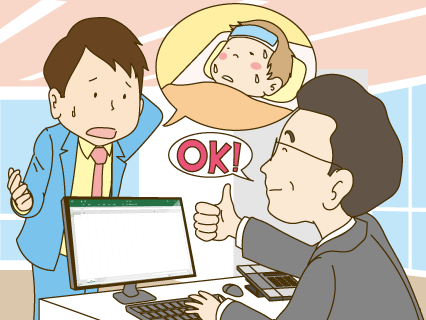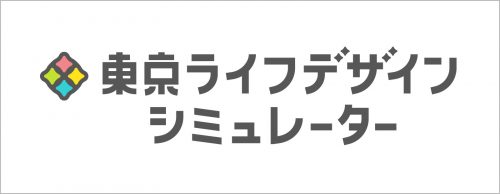Table of Contents
- Parenting Manga “Ikubosu de Ikubosu de Changed Now and in the Future” (Japanese only)
- Expansion of systems to encourage fathers to participate in childcare The power of companies to support their employees who are “ikumen” (men who enjoy child-rearing)
- Achieved 100% take-up rate by introducing a paid maternity leave system Sekisui House
- Dads Share Information on In-House SNS Takeda Pharmaceutical Company Limited
- Handing over maternity leave application forms from supervisor to subordinate Showa Denko
- Raising Children While Teleworking at Home Act Ind.
- Tokyo Metropolitan Government supports companies introducing telework and companies fostering “ikubos” (bosses)
Parenting Manga “Ikubosu de Ikubosu de Changed Now and in the Future” (Japanese only)



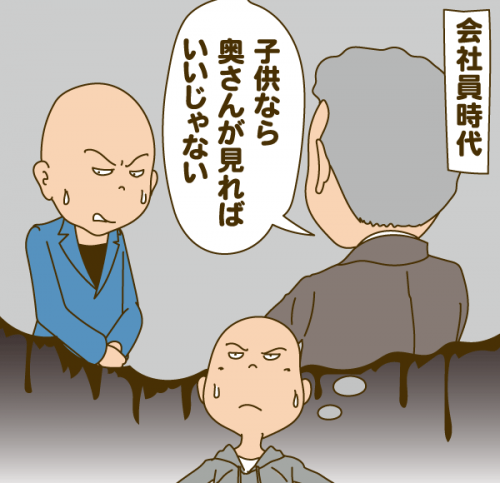






Profile
Eiichi
After working for a design company in Tokyo, he became a freelance illustrator. He is a hard-working father who creates animation, manga, and illustrations, including winning the Yubari International Fantastic Film Festival’s International Short Film Showcase Division Excellence in Animation Award.
Expansion of systems to encourage fathers to participate in childcare The power of companies to support employees who work with fathers
Creation of a paid childcare leave system,
Promotion of telework, for example, which allows people to work from home while taking care of their children,
Corporate programs that support fathers’ participation in childcare are expanding.
This time, to the fathers who participate in childcare by taking advantage of various systems,
We asked them how the company’s system has changed them, their families, and their workplaces.
In addition, we will introduce the Tokyo Metropolitan Government’s policy to support ikumen companies.
Achieved 100% acquisition rate by introducing a paid maternity leave system.
Sekisui House
In September 2018, Sekisui House introduced the “Ikumen Leave” system, which encourages all employees with children under the age of three to take at least one month of childcare leave, and achieved a 100% rate of male employees taking childcare leave. The key point of this system is that the first month of the childcare leave period is paid. While many companies offer unpaid leave during the childcare leave period, ensuring financial security seems to be one of the factors that pushed the fathers to take the leave. We visited Sekisui House’s “Ikumen Forum” held in September and spoke with some of the fathers who took advantage of the system.
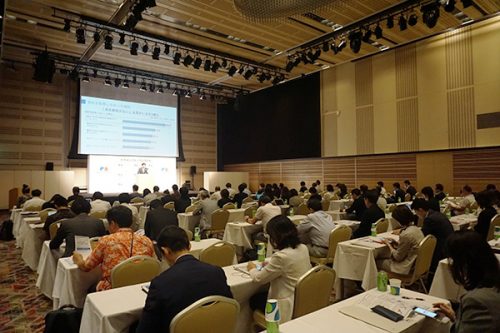 Sekisui House held the Ikumen Forum
Sekisui House held the Ikumen Forum
CASE Work efficiency increased after returning to work.
Yuki Sakai

I took a month of maternity leave to coincide with my wife’s return to work. It was my 10th year with the company and I was enjoying my work and was very busy. I was anxious about taking a month off at such a time, so I spent several months preparing to take over her work before taking childcare leave. Looking back on it now, I think it was a good experience. It wasn’t only taking time off work that made me anxious. I was also anxious about housework. Before that, most of the housework was done by my wife, so I didn’t know where to find seasonings or where to go shopping. I had to learn from scratch.
There are a few things I learned for the first time after taking maternity leave. First, the amount of work my wife was doing at home. I was surprised at how much hard work she was doing, and I felt a renewed sense of gratitude. I was also amazed at the work ethic of the younger workers in the office. Even without me, the work was running smoothly. Inspired by my juniors and in order to support my wife, I changed my attitude toward work after returning to work. I began to think about what I could do in the limited time I had, and I think my work efficiency has improved.
CASE has become more tolerant of employees who take time off for child-related reasons.
Takashi Omura
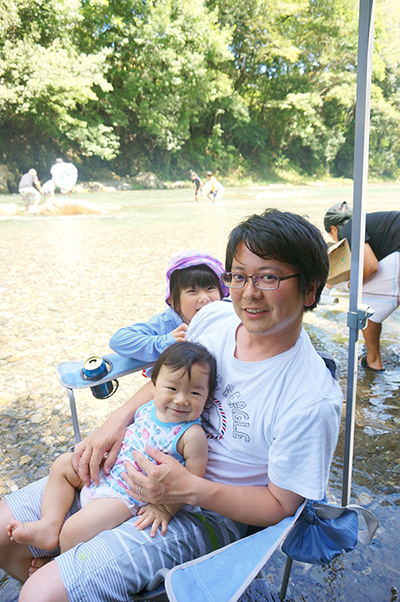
In my 15th year with the company, when I was in the position of General Manager, I took a one-month maternity leave. To be honest, I thought it would be impossible for me to take childcare leave. However, when I discussed this with my subordinates, they all encouraged me to take the leave for the sake of my family. Perhaps it was because all of my subordinates were women who had taken childcare leave before, but they worked together to support me while I was on childcare leave.
Since returning to work, I have learned to be very tolerant of employees who take time off for reasons such as a fever. I don’t think I would have felt this way if I had not experienced maternity leave. I am grateful to the company for giving me this experience.
After taking CASE maternity leave, performance improved.
Hiroshi Hayashi
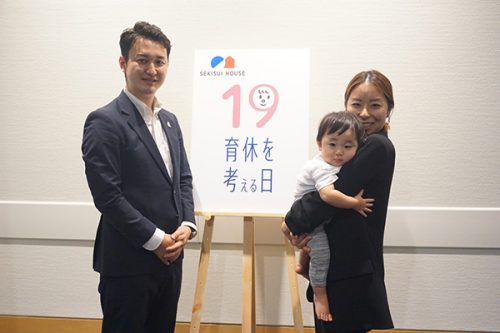
I have taken childcare leave twice so far. Before taking childcare leave, I was worried that it would be disrespectful to customers if I took time off because I work in sales. However, when I explained the situation to our customers, they were very understanding. They set up a meeting to discuss my work before I took maternity leave, and my work went smoothly before I took the leave.
Since taking childcare leave, I have become more conscious of whether I am not embarrassed when my children see me at work. I work on houses, and I also think that participating in childcare has made me more persuasive when explaining and proposing floor plans and equipment to customers. Thanks to this, my performance has improved since I returned to work.
Dads share information via in-house SNS
Takeda Pharmaceutical Company Limited
One of Takeda’s internal social networking services is “Fathering Takeda,” in which more than 440 male employees, most of whom are highly interested in child rearing, participate. The fathers and mothers in the company share their concerns about childcare and exchange information, and there is a growing awareness that men’s participation in childcare is a matter of course.
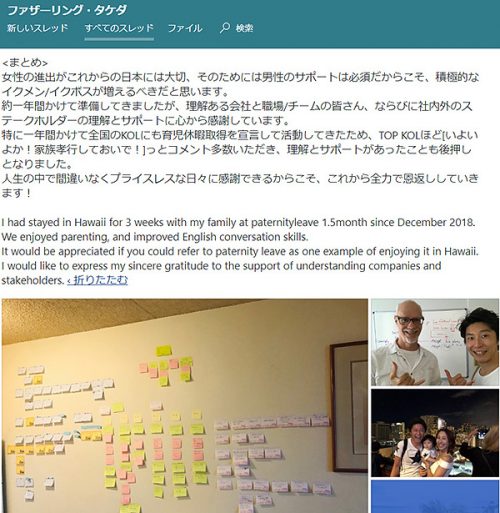 Fathering Takeda’s Submission Screen
Fathering Takeda’s Submission Screen
Fathering Takeda members are usually connected online, but at last year’s Family Day, where employees’ families were invited, the members set up a booth. They offered to take pictures of the families who came to the office and give them as gifts.
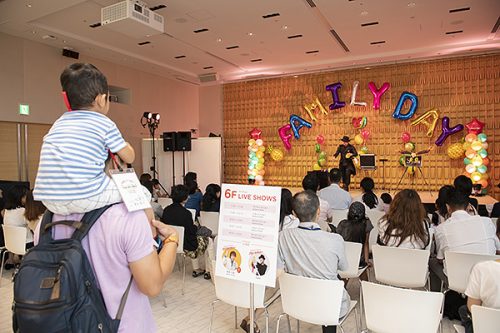 Family Day conducted in 2018
Family Day conducted in 2018
We interviewed Mr. Koji Obara, a registered member of Fathering Takeda, who took a month and a half of childcare leave last December.
Prepare yourself by watching the childcare of our seniors at CASESNS.
Kunitsugu Obara
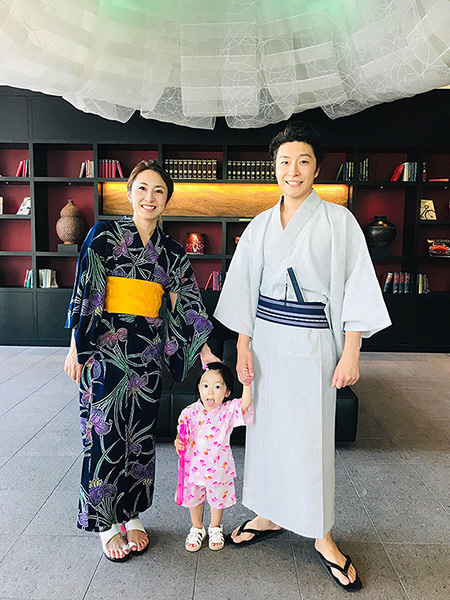
I myself was encouraged to take childcare leave by a senior employee who had taken childcare leave, but I think there are many people who cannot hear about the experience directly from the person themselves. I think there are many people who cannot hear directly from others about their experiences. I think there are many people who cannot hear directly from the person who took childcare leave.
Seeing how our seniors are raising their children through Fathering Takeda was a good preview. Even if you read books and gather information, you may often think that it does not fit your company. However, real-life examples from people who work at the same company make me think that I can do it too.
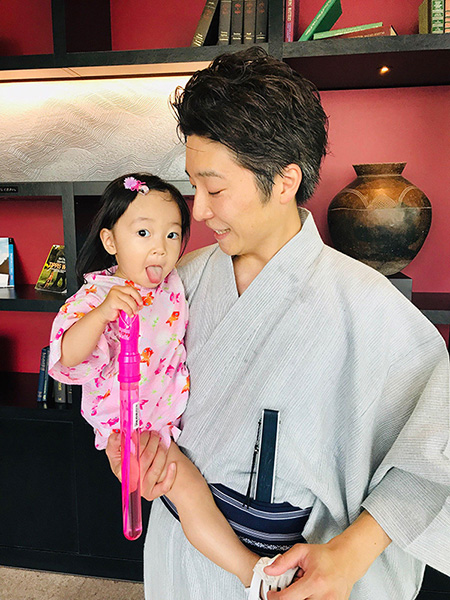
During the childcare leave period, I learned about the joys of childcare and my wife’s daily struggles, and also had opportunities to improve myself by discussing my strengths as a couple and attending an overseas language school as a family. I would like to share the knowledge I have gained from these experiences with many people through Fathering Takeda and other programs.
Handing over maternity leave application forms from supervisor to subordinate
Showa Denko
While there is a growing movement to support “ikumen” (men who love their children) through the use of digital technology such as social networking services, there are also examples of analog methods that are proving successful. Showa Denko K.K., which is currently running a “PapaCan” campaign to encourage men to take childcare leave, is increasing the number of men taking childcare leave by daring to hand over paper documents related to childcare leave from supervisors to subordinates. We interviewed Mr. Hironori Ara, Manager of the Diversity Group in the Human Resources Department, who is also raising a 3-year-old daughter, about this initiative.
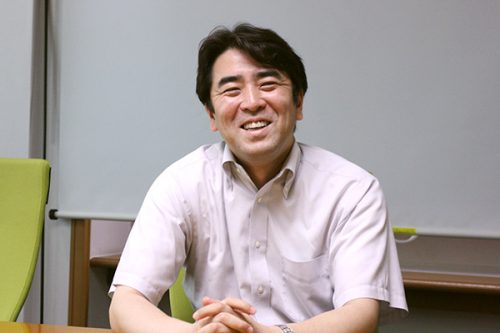
Showa Denko has a system whereby the first 7 days of maternity leave are paid. PapaCan sends a set of application forms together with information about this system to the supervisors of departments where employees are eligible for childcare leave, and asks them to hand them over directly to the employees. The key is not to send the file by e-mail, but to hand the paper directly to them.
When male employees are encouraged to take maternity leave, they may hesitate to do so due to the thought that they may cause trouble at work or out of concern for the eyes of those around them, especially their superiors who are in a position to evaluate them. However, when the supervisor directly hands over the document to the subordinate, the subordinate feels that he/she has received approval from the supervisor to take the childcare leave.
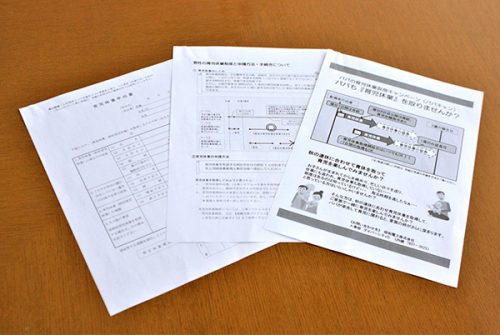 Documents to be handed out at PapaCan. Even the application form is included in the set.
Documents to be handed out at PapaCan. Even the application form is included in the set.
Thanks to ongoing efforts such as PapaCan, male employees nowadays consider taking maternity leave as a matter of course, and when they find out that their spouse is pregnant, they begin to consider when they should take maternity leave. Most take one week, but I have never heard of any difficulty in returning to work when they return.
Raising children while teleworking at home.
ACT-IND
Actindi, an IT company that operates “Iko yo,” a website that provides information on outings with children, has 70% of both male and female employees who are raising children, but only one male employee has taken childcare leave to date. Even so, many male employees are actively participating in childcare. This is supported by a full-flex system that allows employees to work any time between 5:00 and 22:00 without core hours, and a telework system that allows employees to work from home or other locations without having to come to work.
We spoke with Hiroki Moriyama, a programmer who is raising a 7-month-old daughter and uses telework on a daily basis.
Programming while caring for CASE children
Hiroki Moriyama
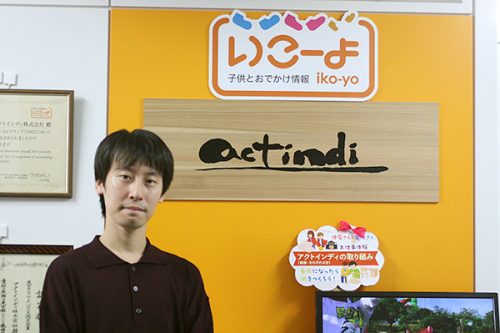
Originally, I worked at the office every day from 9:00 to about 18:00, but after my daughter was born, I switched to a style of teleworking on a daily basis. Currently, I arrive at work at 9:00 and work at the office until 1:00 pm. After that, I have lunch, go home, and work at home from about 3:00 p.m. to 6:00 p.m.
At home, my daughter sleeps near the space where I am working, and I have to carry her when she gets fidgety, so I try to keep my tasks relatively light. If something happens at home, such as my daughter falling ill, I can respond immediately and not have to sober up at the office, which I think is an advantage. If I wake up in the morning and find that my wife is not feeling well, I may switch to telework in the morning. It is nice to be able to choose a style of work that suits my family’s condition.
Telework is used by almost everyone in the company, so there is no sense that it is difficult to use. I feel that each of us has a sense of “mutual respect” for each other. Everyone’s schedules are shared, including those of the executives, so work can be adjusted according to the situations of colleagues in the office. The president’s schedule is sometimes affected by a “son’s presentation,” and the meeting schedule is sometimes shifted because of it, but I think such information is shared within the company, which naturally raises employees’ awareness of child-rearing.
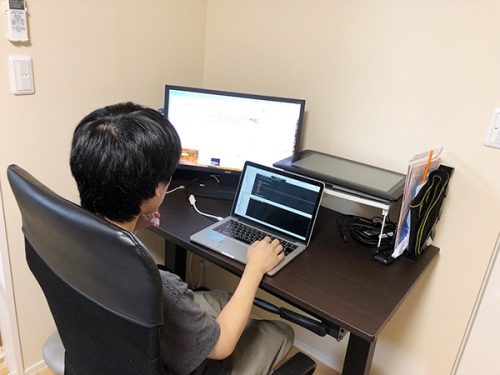 Mr. Moriyama’s work space at home
Mr. Moriyama’s work space at home
Tokyo Metropolitan Government supports companies introducing telework and companies fostering “ikubos” (bosses)
The Tokyo Metropolitan Government has a variety of measures to support companies that promote the participation of fathers in childcare. In this issue, we will introduce two of them.
Subsidies for the purchase of equipment necessary for the introduction of telework
First, measures to support companies introducing telework. The Tokyo Metropolitan Government is strongly promoting the introduction of telework, which will also help alleviate traffic congestion during the Tokyo 2020 Olympic and Paralympic Games.
According to a survey conducted by the Tokyo Metropolitan Government in FY2019, 25.1% of companies with 30 or more employees “have introduced telework. The Tokyo Metropolitan Government has set a goal of “increasing the telework adoption rate to 35%” in preparation for the 2020 Tokyo Games, and is intensively implementing projects to accelerate the introduction of telework.
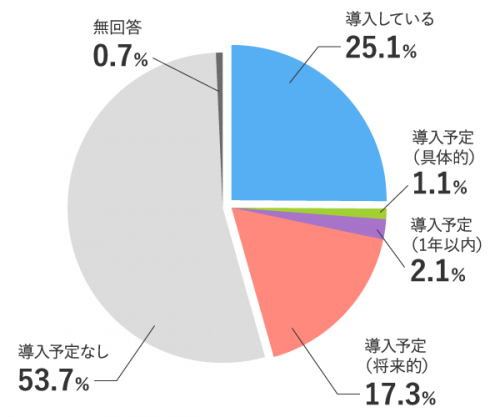 Source: “Tokyo Metropolitan Government Survey on Diverse Work Styles (Telework).
Source: “Tokyo Metropolitan Government Survey on Diverse Work Styles (Telework).
This program allows companies to receive subsidies for the purchase of equipment necessary for the introduction of telework. There are two subsidy programs: “First-Time Telework” and “Telework Utilization and Working Women Support Program (Telework Utilization Promotion Course)” (both are open until the end of March 2020). The first time teleworking” and “Telework for the first time” are both available until the end of March 2020.
As the name suggests, the “Hajimete Telework” program provides support for companies that are “new” to teleworking, with full subsidies for the purchase of equipment, etc. necessary for the trial. The maximum amount varies depending on the size of the company’s workforce, with a maximum of 1.1 million yen for 300 to 999 employees. It is important to note that in order to receive this subsidy, you must undergo free “work style transformation consulting” provided by the Tokyo Metropolitan Government (applications will be accepted until the end of January 2020). This consulting will help to shelve operations to determine which jobs in which departments can be teleworked, and to consider revisions to work rules, labor management methods, and security measures, so that the actual introduction can proceed with peace of mind.
On the other hand, in the case of the “Telework Utilization and Working Women Support Program,” the subsidy is one-half of the total amount, with a limit of 2.5 million yen. In addition to being able to apply without consulting and without using “first-time telework,” subsidies are also available for satellite office usage fees.
For more information, please visit the following website
https://www.shigotozaidan.or.jp/koyo-kankyo/joseikin/
Free training on men’s participation in child care
Another measure is the training for male employees conducted under the “Tokyo Metropolitan Government Acceleration of Women’s Activity Promotion Project. The training, entitled “What is an ‘ikubosu’ – Raising Male Employees’ Awareness,” is designed to deepen understanding of men’s participation in childcare and taking childcare leave. Male employees of small- and medium-sized companies in Tokyo with less than 300 employees can take the course free of charge.
To register for the course, please visit the following website.
*Some sessions have already closed or reached their maximum number of applicants. Please see our website for details.
https://www.josei-jinzai.metro.tokyo.jp/purpose/male-employee/

